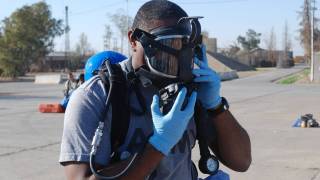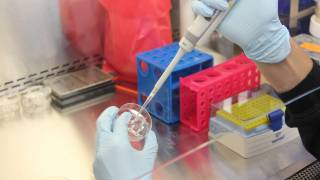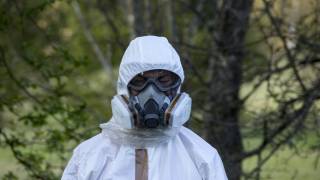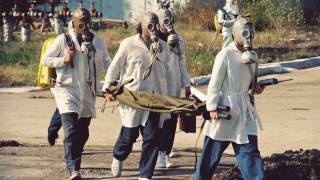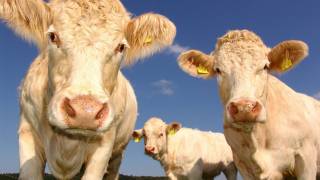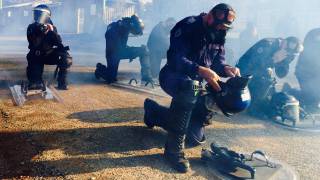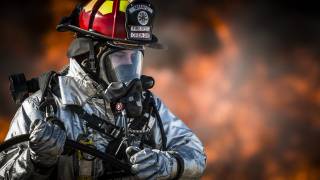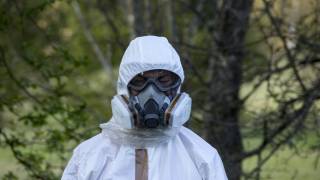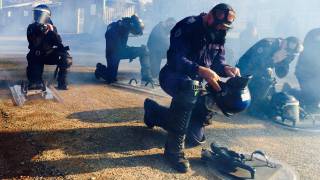Anthrax Outbreak in Animals Near Southeastern France

Since June 28, 2018, more than 50 animals have died of anthrax in the Hautes-Alpes region of France, reported the Regional Health Agency Provence-Alpes-Côte d'Azur (ARS).
This is France's most serious anthrax outbreak in cattle, sheep, and equines in over two decades, according to ARS, who is located in southeastern France.
The ARS identified 103 people potentially in contact with the disease.
As a precaution, preventive antibiotic treatment has been prescribed for 54 people and to date, no human anthrax case has been identified, reported ARS.
“Cases of anthrax being passed on to humans are extremely rare, but in its rarest forms, it can be deadly,” said Christine Ortmans, a doctor with ARS.
As of August 20th, 13 municipalities in the Hautes-Alpes have been impacted: Montgardin, La Batie-Neuve, La Rochette, Chorges, Théus, La Freissinouse, Romette, Ancelle, Saint-Léger-les-Mélèzes, Sainte-Eusebe-en-Champsaur, Rambaud, Saint- Etienne-le-Laus and Buissard.
Senior Hautes-Alpes official Serge Cavalli said ‘animals were being vaccinated at affected farms in the region. Those affected have been banned from production for at least 21 days while the farms are disinfected and to provide time for the vaccinated animals to become immune.’
Anthrax cases are fairly rare, although more than 100 cases have been registered at French farms since 1999, said ARS.
Anthrax is transmitted by spores that can stay inactive in the ground for decades, including in the bodies of dead animals.
When anthrax spores get into the skin, usually through a cut or scrape, a person can develop cutaneous anthrax. This can happen when a person handles infected animals or contaminated animal products like wool, hides, or hair.
Cutaneous anthrax is most common on the head, neck, forearms, and hands. It affects the skin and tissue around the site of infection, says the US Centers for Disease Control and Prevention (CDC).
Cutaneous anthrax is the most common form of anthrax infection, and it is also considered to be the least dangerous. Infection usually develops from 1 to 7 days after exposure. Without treatment, up to 20% of people with cutaneous anthrax may die.
However, with proper treatment, almost all patients with cutaneous anthrax survive says the CDC.
Starting therapy immediately before the anticipated or potential exposure can reduce the risk of illness and reduce mortality from inhalational anthrax, says the Food and Drug Administration (FDA).
After years of refinement, the FDA has issued final guidance for Anthrax: Developing Drugs for Prophylaxis of Inhalational Anthrax.
FDA Commissioner Scott Gottlieb, M.D. said in a press release, “Since the 2001 anthrax attacks, the U.S. government’s efforts to protect the nation from bioterrorism threats have continued to evolve.”
“We now know that a comprehensive preparedness plan for potential anthrax threats must account for both pre- and post-exposure scenarios.”
The final FDA guidance revises the indication to “prophylaxis of inhalational anthrax” for the reduction of disease risk in those who have inhaled, or are likely to inhale, aerosolized B. anthracis spores, but who do not yet have established disease.
Obiltoxaximab, known as Anthim, was FDA approved during March 2016 and is an antibody-based therapeutic that can complement antibiotics by neutralizing the toxins produced by Bacillus anthracis, the bacteria that cause anthrax disease.
While antibiotics can be effective in treating bacteria like anthrax, antibody-based therapeutics, such as Anthim, treat the toxins released by the anthrax bacteria that can lead to illness and death.
In April 2018, the USA government announced it would purchase an anthrax treatment for $25.2 million.
Anthim will be delivered to the Strategic National Stockpile (SNS), the nation’s largest supply of potentially life-saving medical countermeasures, such as vaccines, therapeutics, and diagnostics.
The SNS contains more than $7 billion worth of medicines and medical supplies referred to as the ‘formulary.’
While many SNS items are readily available, some are not available in the commercial marketplace.
For potential consumer use, there are anthrax vaccine candidates in development.
On March 13th, 2018, Altimmune announced data from a pre-clinical study comparing SparVax-L and BioThrax against anthrax infection.
This limited study showed a 67 percent survival rate in animals challenged with a lethal dose of anthrax, after a single dose of SparVax-L.
Additionally, SparVax-L reported a 100% survival rate after two doses on day 0 and day 14 when challenged at Day 28, which was comparable to BioThrax’s 96% survival rate after two doses.
SparVax-L is being developed as a second generation, highly purified recombinant anthrax vaccine requiring only two vaccinations for protection.
SparVax-L is further differentiated by its ability to be stored at room temperature, making it well-suited for stockpiling in the Strategic National Stockpile.
Our Trust Standards: Medical Advisory Committee






